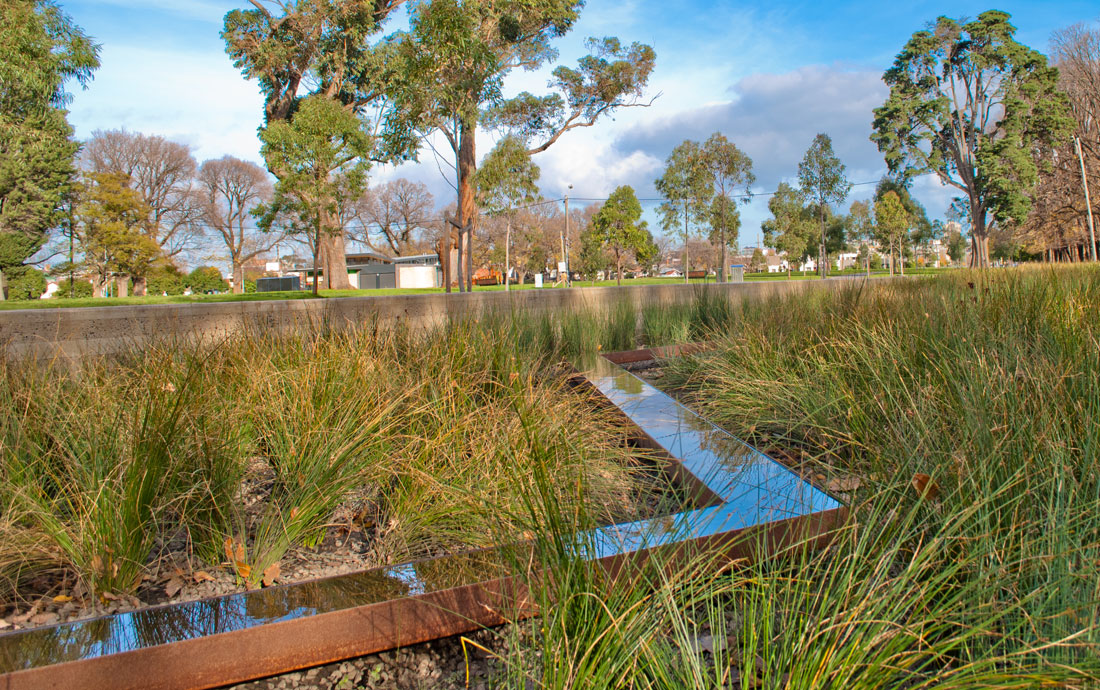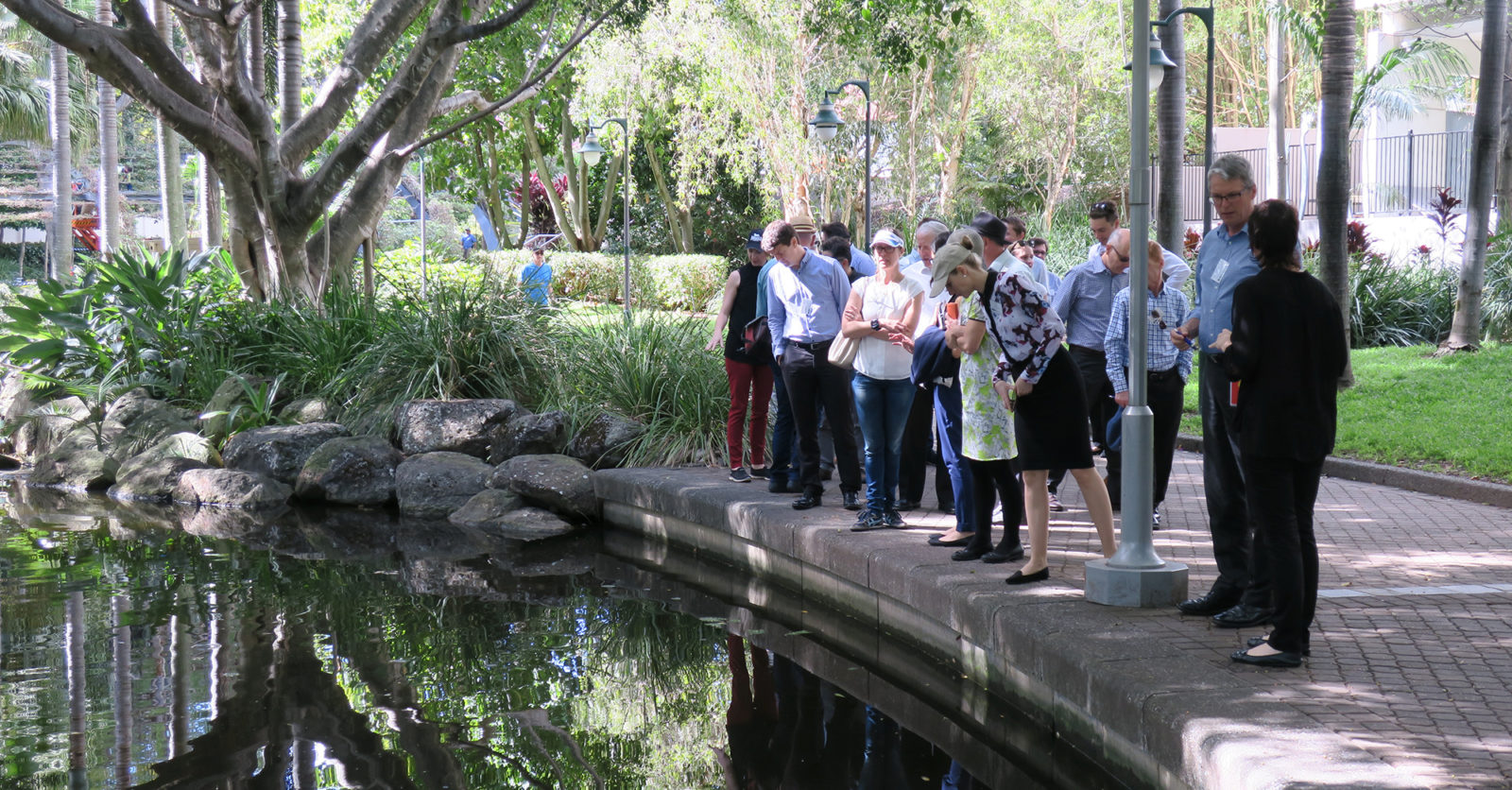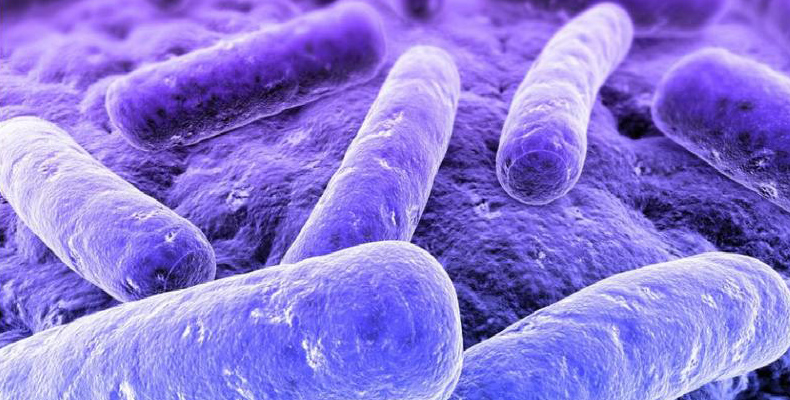Turning knowledge into action (Part 3)
Reflecting on knowledge gained since 2012: technologies for the future
There’s a technology for that (Program C)
The motto “fit-for-purpose” best illustrates the aims of Program C. Water sensitive cities need additional water sources to provide certainty about future water supplies, rather than the case where individual water utilities draw water only from dams or aquifers. In that model, too much available water – like stormwater, greywater and wastewater – continues to drain into the ocean. It goes unutilised and is lost to both people and a thirsty environment. So is it possible for a city to create systems to supply some of its own water needs?
Stormwater is one resource with a potentially wide range of residential uses. A study of urban stormwater in Victoria, New South Wales, and Queensland (Project C1.2) found that its quality can resemble secondary treated wastewater and could be hazardous to human health if used untreated.
Pharmaceuticals, food ingredients, and human bacteria and viruses found in stormwater indicated that it is being polluted by sewage more often than expected and cannot be left untreated before being used to, for example, flush toilets, irrigate lawns and gardens, or in cooking. The level of treatment required depends on the intended end use of the water. The study produced some important tools to support future stormwater treatment, including a water quality database on chemical contamination, pathogens and toxicity for water industry use and a list of priority risks caused by the chemical and microbial hazards in stormwater.

Gardens as filters
Knowing that alternative water sources require treatment tailored to their future use occupied a stream of research into different treatment technologies (Project C1.3). The goal was to produce low-cost and low-energy local treatment systems for fit-for-purpose water to complement the centralised (potable) water supply. The novel filtration technology developed for this purpose took its cue from nature. Biofilter raingardens with a substrate of copper-coated zeolite proved to be particularly effective for removing pathogens such as E. coli from residential greywater, although this capability was reduced during dry weather periods. Electro-chemical oxidation systems, on the other hand, were able to treat greywater inside a building and were especially effective when combined with activated carbon as an additional mechanism for pathogen removal. These results, and extensive on-ground testing of filtration methods, have since contributed to the updating of guidelines for the validation of engineered treatment processes.

Waste not, want not – recovering nutrients from wastewater
One man’s microbial waste is another’s resource. In addition to pathogens like faecal bacteria and viruses, water filtration systems such as raingardens and electro-chemical oxidation systems also remove valuable nutrients that are needed to produce agricultural fertilisers. Because of their high value, recovering nutrients such as potassium, nitrogen, and phosphorus from wastewater can make the treatment process cost-neutral, while the associated production of methane gas which is recovered for electricity generation also makes it energy-neutral and radically changes the way we treat domestic wastewater.
A promising means of recovering these nutrients uses phototrophic purple bacteria (PPB). Until now, many wastewater treatment processes have been unviable due to their costly energy consumption and low nutrient recovery. However, PPBs can alleviate these obstacles by offering a way to efficiently remove nitrogen and phosphorous from wastewater. Researchers from the University of Queensland are now awaiting the outcomes of a pilot processing plant using PPB at Brisbane’s Luggage Point Advanced Water Treatment Plant (Project C2.1). Once some current challenges to the process can be addressed (such as the cost of providing sufficient light for the light-loving bacteria), this could lead to an about-turn in wastewater treatment – from destroying nutrients to nutrient recovery that more than pays its own way.

Smart consumption
Better wastewater recycling is not the only technological option to optimise urban water use and ensure a reliable supply. Intelligent urban water systems (Project C5.1) that use sensors, telemetry and specific software to monitor water use along the water path from treatment facilities to households can provide information such as up-to-the-minute data about water consumption to aid decision-making about urban water systems.
For instance, Western Australia’s Kalgoorlie-Boulder, a city that relies entirely on water pumped from Perth 600 kilometres away, was fitted with Smart Meters across 13,000 properties to provide a clear picture of water use by residential, commercial, and industrial properties. Water flow at a constant low rate pointed to possible leakages in pipes or appliances, and such leakages accounted for 10% of total water use among households. Using these data, the WA Water Corporation was able to follow up with households and use the calculated cost of the leaks to persuade householders to fix them. Feedback on daily and seasonal water use can improve the sustainable behaviour of water users in Kalgoorlie-Boulder and ultimately across other cities in Australia, leading to additional environmental and social benefits for communities. The data derived from smart meters can also be used to optimise water pumping operations by using pump operating strategies on time-based schedules
According to Professor Jurg Keller, Deputy Director of the University of Queensland’s Advanced Water Management Centre, the changes facing the water sector from the emerging raft of metering and treatment technologies at different scales parallel those already undergone by the electricity sector. In that industry, new technologies have transformed the sector from state-controlled power stations to a suite of public and private options that include solar panels, wind turbines, and geo-thermal sources.
“While the current evolution of the water sector is somewhat more complex due to the potential health hazards of water not appropriately treated for use, its future will consist of a hybrid of centralised and decentralised water management options in a fully integrated system. These changes are at least partly demand-driven – people welcome technology that gives them greater control over their water usage and is cheaper than the current centralised system”.
Nicola Markus for the Mind Your Way team.